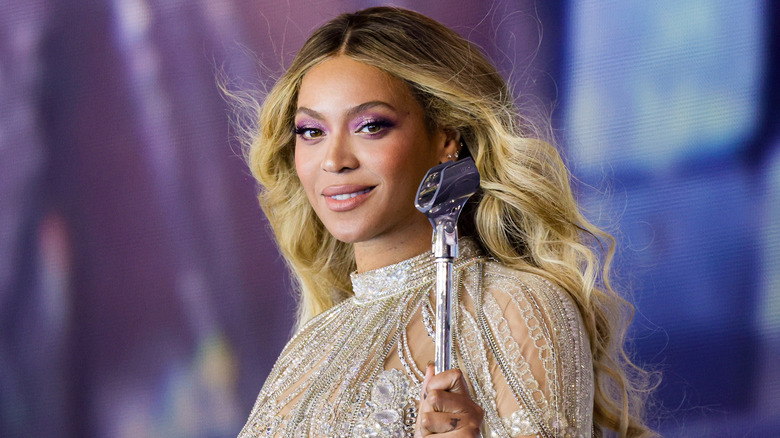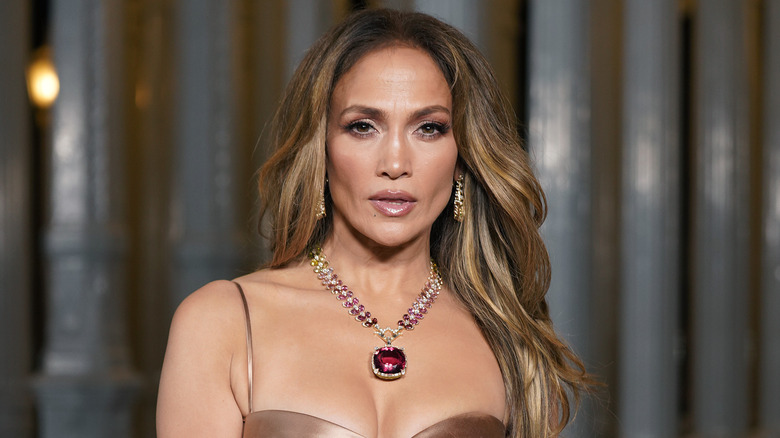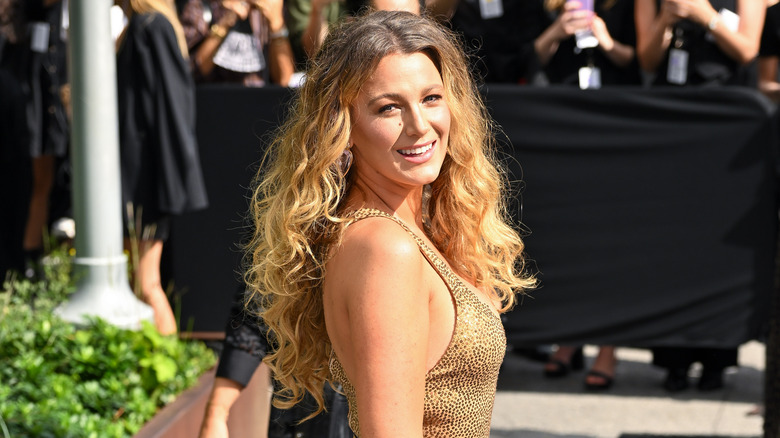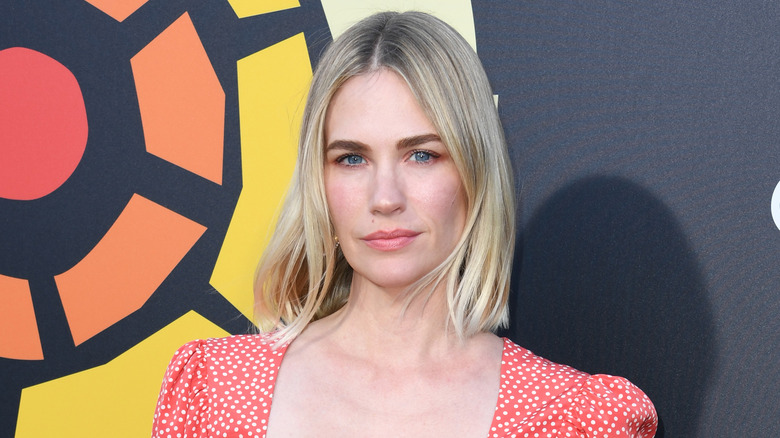The Differences Between Root Touch-Up Techniques, Explained
Nothing can kill the happiness and confidence that come with dyed hair quite like pesky roots. You could be bouncing around, living your best life, when you catch a glimpse of your hair in a storefront window and there they are: loud, bold, and impossible to ignore. While it may have been all the rage to have roots in 2020 — you know, because most of us had no choice thanks to COVID-19 — in any other situation, roots are simply no bueno.
Getting our roots touched up regularly isn't just about coloring those strands back into submission, but avoiding messing with the integrity of your look. If you let your roots go too long, you're looking at an application process that's not just for the new growth, but for the rest of the hair too. "This is an unnecessary, lengthy application and will cost a lot more money in the long run," hairstylist Jack Howard told Popsugar. "If left longer than six weeks, the client will be left with 'hot roots,' which is when the root color is brighter than the rest of the hair."
No matter what hair color method you're rocking, having dyed hair isn't just about regular upkeep, but also about how those roots are touched up. There's more than one root touch-up technique — the one you get has everything to do with the color you currently have and the look you're trying to achieve.
Smudging
Also known as root shadowing when it involves a darker shade, smudging involves the blending of one's natural roots with their highlights to soften the distinction between the two colors. "I smudge everyone who walks in the door," hair colorist Kari Hill told Refinery 29. "It takes away the line of demarcation we all had when we got highlights when we were younger... Think of it almost like an eyeliner with a smudger at the end. It takes out the deliberate look of the highlight at the root."
Let's be honest: the only thing worse than roots that need a touch-up are roots that have a distinctive line between them and the rest of the hair. With root smudging, the color is applied at the scalp and pulled down the hair shaft. "You can smudge 1-3 inches," color technician Joe Savine told Paul Edmonds. "The final result appears darker at the root and lighter through mid-lengths and ends — we'd leave out the face-framing pieces to give 'pop'."
Smudging is also the best touch-up option for people who don't have too much gray hair. "We call this gray blending, and [it] is ideal for those with less than 25-percent gray hair," colorist Joey LaBeija told Byrdie. For the most part, all root touch-ups are just a variation of smudging.
Melting
As the name suggests, melting the roots pretty much does exactly that: it blends the colors in a way that makes it impossible to see where each color begins and ends. It's not unlike melting vanilla and chocolate ice cream together to get that one perfect mocha shade. "A root melt is different from a root shadow, as root melting eliminates the harsh line of color demarcation," celebrity hairstylist Renya Xydis told Elle. "By melting the colors together, a very natural, 'lived-in' look is created by a root melt. This look is low maintenance as it lets you embrace your roots and natural color, whilst also having the lightness and brightness of highlights or balayage lower down." Unlike smudging and tapping, melting is the one technique that doesn't start at the scalp. Instead, it's applied a bit further away, and then taken the furthest down the shaft to create the ultimate melted look.
Melting works best when going from brunette to blonde or blonde to brunette, and is ideal for those who have a balayage. It's also a good choice for those who are trying to grow out their roots. Melting is all about creating a look that's as seamless as possible.
Tapping
Root tapping is sort of the short and quick version of smudging. Although it's also applied at the scalp, the color is dragged down the hair shafts no more than a half inch in depth. "A root tap is going to be applied much more precisely and delicately to preserve brightness, usually to the areas around the hairline," celebrity colorist Min Kim told Byrdie. Tapping doesn't create as much dimension as smudging or the lived-in look of melting, but for those who want to brighten their roots, it's the perfect touch-up technique. Tapping is best for blondes or other people with light hair.
But just because you have the name of these techniques under your belt, you'll still want to explain to your hair colorist exactly what you're hoping to achieve. "The nuances between the names often vary from region to region and especially from artist to artist," said Kim. There's no sense in paying big bucks for something that isn't precisely what you want.



